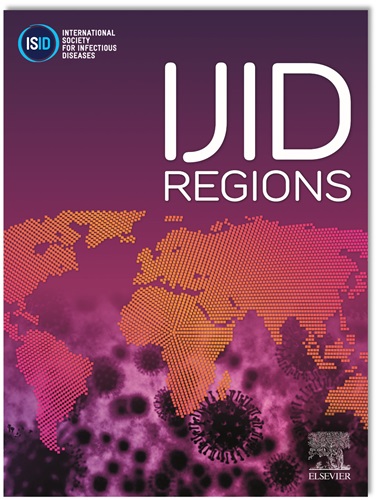Electronic Pillbox-enabled Self-administered Therapy Versus Standard Directly Observed Therapy for Tuberculosis Medication Adherence and Treatment Outcomes in Ethiopia: a Multicenter Randomized Controlled Trial
IF 4.8
2区 医学
Q1 INFECTIOUS DISEASES
引用次数: 0
Abstract
Background
The prolonged and complex nature of anti-tuberculosis regimens contributes to suboptimal medication adherence, leading to poor treatment outcomes and drug resistance. Trials evaluating the effectiveness of digital adherence technologies are urgently needed. This study aimed to evaluate the effectiveness of pillbox-enabled self-administered therapy (SAT) compared to standard DOT on adherence to tuberculosis medication and treatment outcomes.
Methods
In this multicenter, randomized controlled trial, adults diagnosed with new or previously treated, bacteriologically-confirmed, drug-sensitive pulmonary tuberculosis and eligible to commence anti-tuberculosis therapy were enrolled from 10 healthcare facilities across Ethiopia. Participants were allocated in a 1:1 ratio to either receive a 15-day supply of tuberculosis medication dispensed with an evriMED500® digital medication event reminder and monitor (MERM) device for self-administration and return every 15 days, or to undergo standard DOT. The MERM device integrates an electronic module and medication container, serving to record adherence, securely store medication, emit audible and visual alarms onboard to prompt patients for timely intake and refills, and facilitates healthcare providers in downloading data for monitoring adherence closely. Both groups were monitored throughout the standard two-month intensive treatment phase. The primary endpoints, analyzed following the intention-to-treat (ITT) principle, included were individual-level percentage adherence during the two-month intensive phase, and sputum smear conversion. Secondary endpoints were a negative IsoScreen urine isoniazid test, adverse treatment outcomes, and self-reported adherence. ClinicalTrials.gov: NCT04216420.
Results
A total of 337 patients underwent eligibility screening, with 114 randomly assigned and included in the final analysis (57 in the control group and 57 in the intervention group). Adherence to tuberculosis medication showed comparable rates between the intervention arm (geometric mean percentage [GM%] 99.01%, geometric standard deviation [GSD] 1.02) and the control arm (GM% 98.97%, GSD 1.04), falling within the predefined margin for non-inferiority [mean ratio (MR) 1.00 (95% CI 0.99-1.01); p=0.954]. Urine isoniazid testing was conducted on 443 (97%) samples obtained from 114 participants, revealing that 13 participants yielded at least one negative result. A negative test was more prevalent among the control group compared to the intervention group (p=0.008). There were no significant difference observed regarding smear conversion, adverse treatment outcomes, and self-reported non-adherence.
Discussion
In this randomized controlled trial involving patients with drug-susceptible pulmonary tuberculosis, self-administered therapy facilitated by the MERM device demonstrated treatment adherence comparable to the standard in-person DOT. Adherence to treatment in the intervention arm proved non-inferior when compared to the control arm, suggesting the feasibility of monitoring participants throughout their treatment without requiring daily visits to a healthcare facility.
Conclusion
In addressing patient barriers linked to DOT, tuberculosis medical programs should explore options such as MERM.
埃塞俄比亚肺结核药物依从性和治疗结果的电子药盒自我给药治疗与标准直接观察治疗:一项多中心随机对照试验
背景:抗结核方案的长期性和复杂性导致药物依从性欠佳,导致治疗效果差和耐药。迫切需要评估数字依从技术有效性的试验。本研究旨在评估药丸盒自我给药治疗(SAT)与标准DOT在结核病药物依从性和治疗结果方面的有效性。方法在这项多中心随机对照试验中,从埃塞俄比亚的10家医疗机构招募了诊断为新发或以前治疗过的细菌学确诊药物敏感性肺结核并符合开始抗结核治疗条件的成年人。参与者按1:1的比例分配,要么接受15天的结核病药物供应,并使用evriMED500®数字用药事件提醒和监测(MERM)设备进行自我给药,每15天返回一次,要么接受标准DOT。MERM设备集成了一个电子模块和药物容器,用于记录服药情况、安全储存药物、发出声光警报以提示患者及时服药和补充药物,并方便医疗保健提供者下载数据以密切监测服药情况。两组在整个标准的两个月强化治疗阶段均进行监测。根据意向治疗(ITT)原则分析的主要终点包括两个月强化期的个人水平依从性百分比和痰涂片转换。次要终点是IsoScreen尿异烟肼测试阴性、不良治疗结果和自我报告的依从性。ClinicalTrials.gov: NCT04216420。结果共筛选337例患者,其中114例随机纳入最终分析(对照组57例,干预组57例)。结核病药物依从性在干预组(几何平均百分比[GM%] 99.01%,几何标准差[GSD] 1.02)和对照组(GM% 98.97%, GSD 1.04)之间具有可比性,落在预先设定的非劣效性[平均比(MR) 1.00]的范围内(95% CI 0.99-1.01);p = 0.954)。对114名参与者的443份(97%)尿样进行了异烟肼检测,结果显示13名参与者至少产生了一个阴性结果。对照组阴性率高于干预组(p=0.008)。在涂片转换、不良治疗结果和自我报告的不依从性方面没有观察到显著差异。在这项涉及药物敏感肺结核患者的随机对照试验中,MERM设备促进的自我给药治疗显示出与标准的现场DOT相当的治疗依从性。与对照组相比,干预组的治疗依从性并不差,这表明在整个治疗过程中监测参与者而不需要每天前往医疗机构的可行性。结论:为了解决与DOT相关的患者障碍,结核病医疗项目应探索MERM等选择。
本文章由计算机程序翻译,如有差异,请以英文原文为准。
求助全文
约1分钟内获得全文
求助全文
来源期刊
CiteScore
18.90
自引率
2.40%
发文量
1020
审稿时长
30 days
期刊介绍:
International Journal of Infectious Diseases (IJID)
Publisher: International Society for Infectious Diseases
Publication Frequency: Monthly
Type: Peer-reviewed, Open Access
Scope:
Publishes original clinical and laboratory-based research.
Reports clinical trials, reviews, and some case reports.
Focuses on epidemiology, clinical diagnosis, treatment, and control of infectious diseases.
Emphasizes diseases common in under-resourced countries.

 求助内容:
求助内容: 应助结果提醒方式:
应助结果提醒方式:


